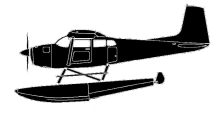
ASN Wikibase Occurrence # 298157
This information is added by users of ASN. Neither ASN nor the Flight Safety Foundation are responsible for the completeness or correctness of this information.
If you feel this information is incomplete or incorrect, you can submit corrected information.
| Date: | Saturday 15 July 2017 |
| Time: | 16:00 LT |
| Type: |  Cessna A185 |
| Owner/operator: | |
| Registration: | N401WC |
| MSN: | 18502235 |
| Year of manufacture: | 1973 |
| Total airframe hrs: | 3864 hours |
| Engine model: | Continental IO-520-D |
| Fatalities: | Fatalities: 0 / Occupants: 1 |
| Aircraft damage: | Substantial |
| Category: | Accident |
| Location: | Wasilla, Alaska -
 United States of America United States of America
|
| Phase: | En route |
| Nature: | Private |
| Departure airport: | LAKE LOUISE, AK (13S) |
| ANCHORAGE, AK (3C3) | |
| Investigating agency: | NTSB |
| Confidence Rating: |
The pilot reported that he departed on a 1.3-hour flight in his floatplane, and about 1 hour into the flight, fuel flow diminished and the engine 'sputtered.†He noted that the left tank fuel quantity gauge indicated empty, and the right fuel tank indicated 1/2 full. He verified that the fuel selector was in the 'both†position and increased the throttle. The fuel flow increased momentarily, and then the engine lost total power. The pilot performed a forced landing on grassy tidal mud flats, during which one of the floats hit a log and the airplane nosed over, which resulted in substantial damage to the wings, vertical stabilizer, and wing struts. A witness stated that there was no fuel leaking from the wreckage at the scene.
An examination of the airframe revealed that only 1.75 gallons of fuel remained in the left tank, which was below the unusable amount of 3 gallons; 8 gallons remained in the right tank. The pilot reported that he departed on the round-trip flight with 62 gallons. The digital fuel flow gauge indicated that 61.2 gallons had been used since refueling and 0.8 gallons of planned fuel remained. The fuel selector and auxiliary fuel pump were functionally tested with no anomalies noted. The vented fuel caps, tank vents, and drain system were intact. A fuel quality sample revealed no contaminants and the drained fuel was used for an engine test run. The engine started and ran at a low power setting with no anomalies observed.
According to the pilot, there was sufficient fuel onboard to complete the flight. The engine likely burned fuel primarily from the left tank, for reasons that could not be determined.
Had the pilot monitored the fuel quantity indicators or the digital fuel flow quantities during the flight, he would have known that one tank was supplying fuel at a faster rate than the other, that the left tank was approaching empty, and that more fuel than he planned was being consumed. After the loss of power, the pilot responded by "pumping the throttle;" however, manufacturer guidance stated that the pilot should select the fullest tank and turn on the auxiliary fuel pump. Had the pilot followed the manufacturer's guidance, it is likely that engine power would have been restored.
Probable Cause: The pilot's failure to manage fuel quantity in flight, which resulted in a total loss of engine power due to fuel starvation. Contributing to the accident was the pilot's failure to follow manufacturer guidance for restoring engine power after emptying a fuel tank.
Accident investigation:
 |
|
Sources:
NTSB ANC17LA037
Location
Revision history:
| Date/time | Contributor | Updates |
|---|---|---|
| 15-Oct-2022 13:49 | ASN Update Bot | Added |
Corrections or additions? ... Edit this accident description
The Aviation Safety Network is an exclusive service provided by:


 ©2024 Flight Safety Foundation
©2024 Flight Safety Foundation